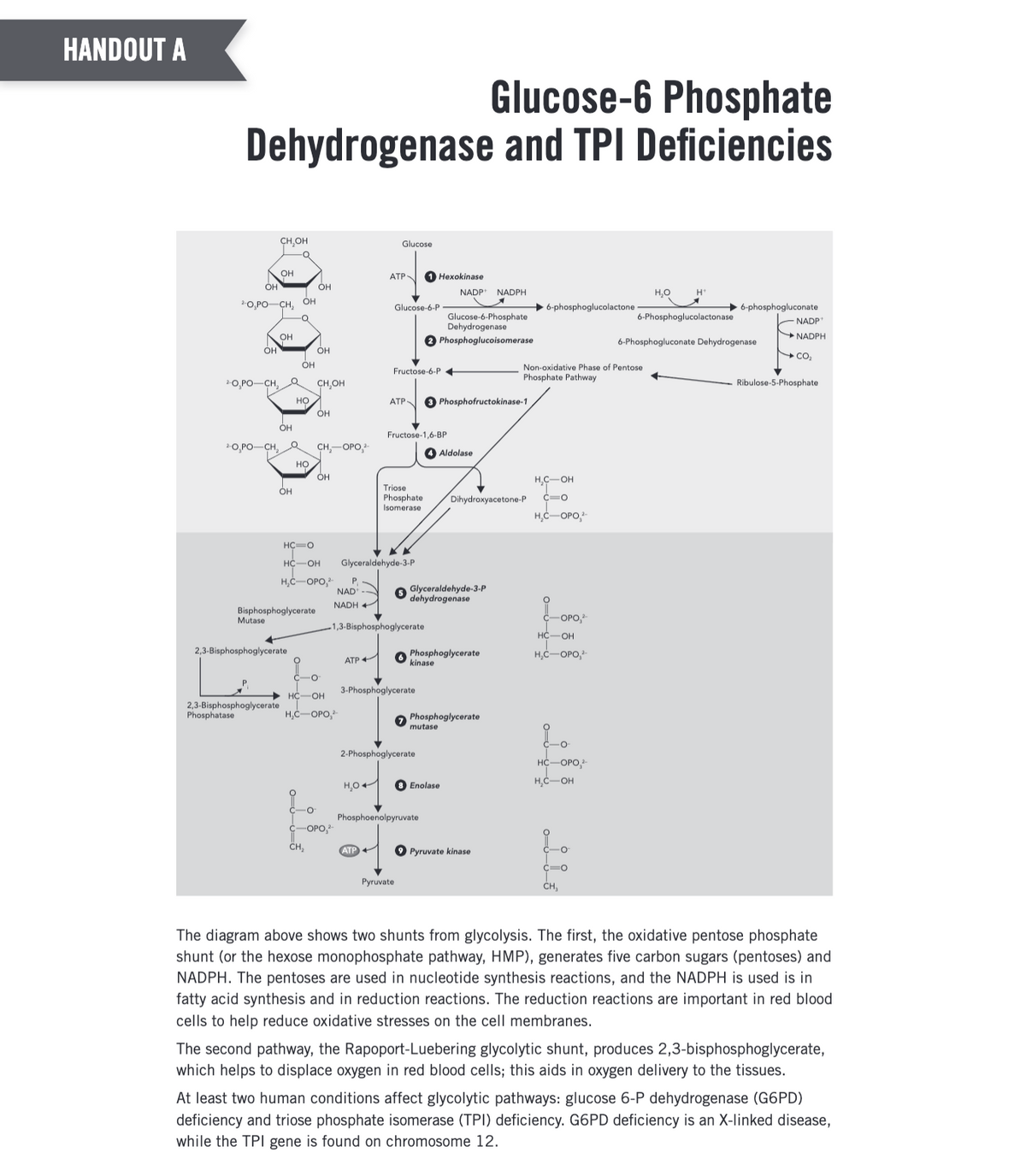TPI deficiency is a rare human condition. Patients who lack TPI cannot convert the triose dihydroxyacetone phosphate into glyceraldehyde 3-phosphate. What happens to glycolysis in TPI patients? TPI patients suffer from chronic hemolytic anemia (abnormal breakdown of red blood cells) and have variable neuromuscular dysfunctions, including muscle weakness, poor muscle tone, and atrophy. Most die of respiratory failure during childhood. Explain why TPI-deficient patients exhibit these conditions using the diagram to justify your answer. TPI is enzyme 5.
TPI deficiency is a rare human condition. Patients who lack TPI cannot convert the triose
dihydroxyacetone phosphate into glyceraldehyde 3-phosphate.
What happens to glycolysis in TPI patients?
TPI patients suffer from chronic hemolytic anemia (abnormal breakdown of red blood cells)
and have variable neuromuscular dysfunctions, including muscle weakness, poor muscle tone,
and atrophy. Most die of respiratory failure during childhood.
Explain why TPI-deficient patients exhibit these conditions using the diagram to justify your
answer. TPI is enzyme 5.
G6PD deficiency is one of the most common human genetic conditions, affecting about 40 million
people worldwide. Patients suffer from hemolytic anemia when exposed to certain drugs, viral or
bacterial disease, or fava beans.

Trending now
This is a popular solution!
Step by step
Solved in 3 steps




